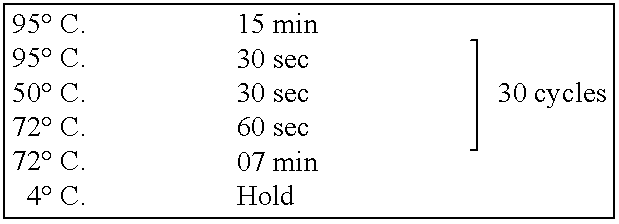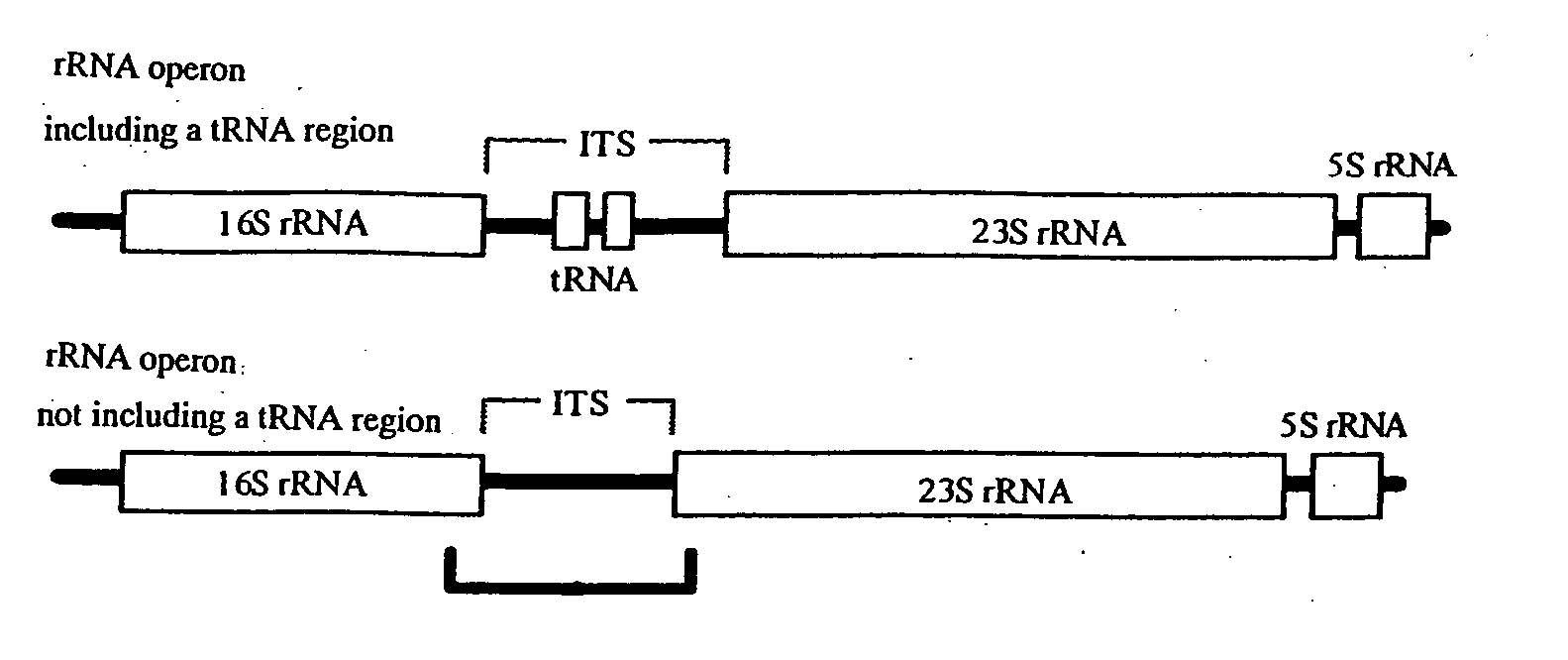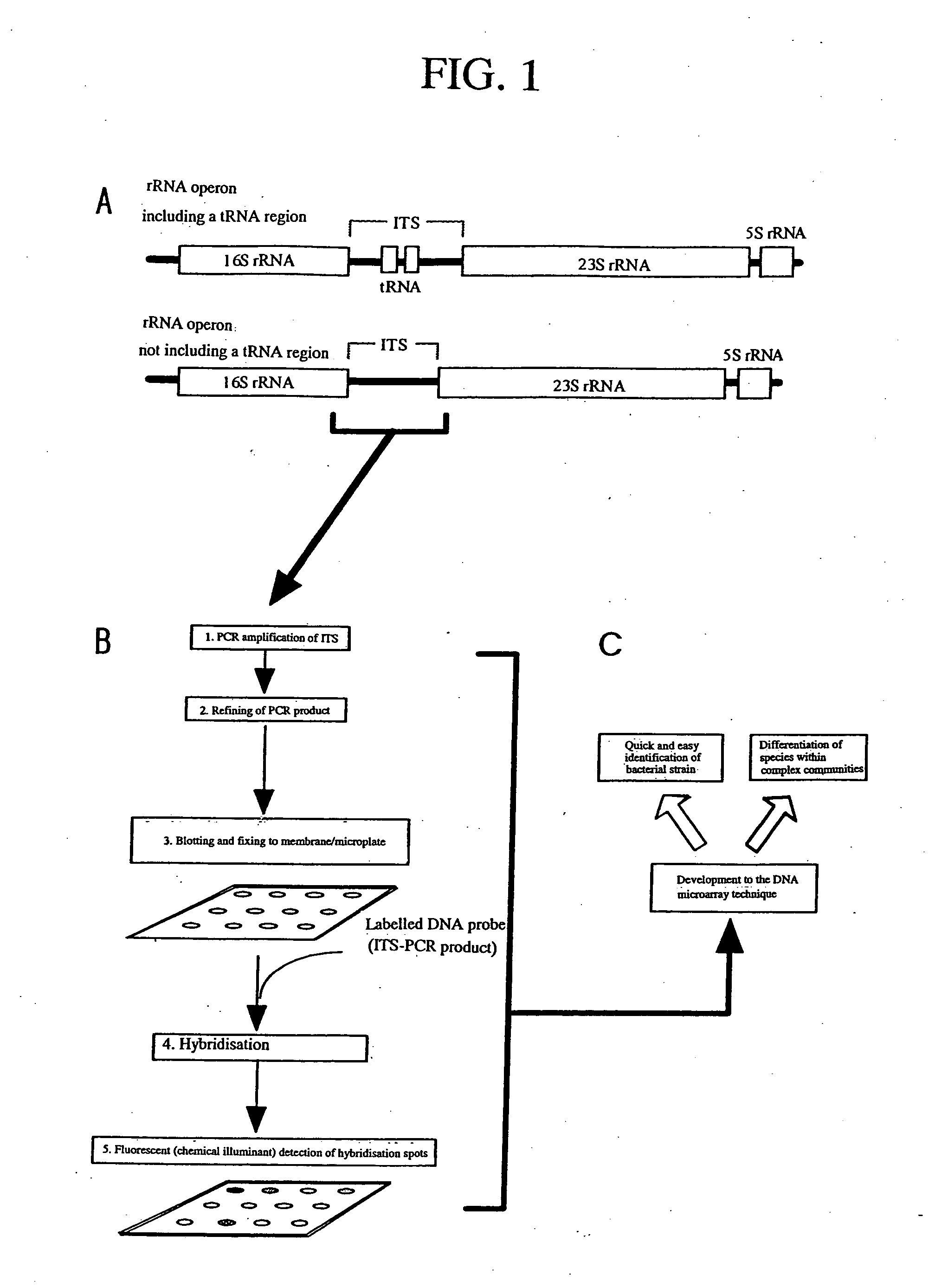Molecular biological identification techniques for microorganisms
a biological identification and microorganism technology, applied in the field of detection and identification of microorganisms, can solve the problems of difficult use of molecular methods in differentiation and identification, difficult to identify bacterial species from a single property or by a combination of phenotypes, and several technical defects of dna-dna hybridization methods
- Summary
- Abstract
- Description
- Claims
- Application Information
AI Technical Summary
Benefits of technology
Problems solved by technology
Method used
Image
Examples
example 1
[0097] Using bacterial strains belonging to the Rhodoplanes genus, which is a photosynthetic bacterium, an ITS-DNA hybridization test and a genome DNA hybridization test were conducted for comparison. FIG. 2 shows the ITS-DNA hybridization rate as contrasted with the genome DNA hybridization rate. A strong primary functional correlation of X=Y was seen between the two. This result indicates that 70% of the genome DNA hybridization rate corresponds to approximately 70% of the ITS-DNA hybridization rate.
example 2
[0098] DNAs were extracted from faeces samples. ITS-DNAs that were amplified and labelled from the extracted DNAs were used for hybridization with a DNA microarray on which ITS-DNAs of enterobacteria of the base strain were fixed. Detection was performed at the enterobacterial species level. FIG. 3 shows a detection image of enterobacteria obtained by hybridization of the faeces samples ITS-DNAs with a DNA microarray. The result shows that a DNA microarray using ITS-DNA is effective in the detection and identification of the bacterial species of microorganisms in a variety of samples.
[0099] The present invention has the effect of making possible differentiation at the bacterial species or relative species level. The ITS-DNA has an advantage over the genome DNA in that the ITS-DNA can be genetically amplified by PCR, etc., does not require a large amount of culture and can be easily and quickly analyzed. Another advantage of the ITS-DNA is that ITS-DNAs of high purity can be used fo...
PUM
 Login to View More
Login to View More Abstract
Description
Claims
Application Information
 Login to View More
Login to View More - R&D
- Intellectual Property
- Life Sciences
- Materials
- Tech Scout
- Unparalleled Data Quality
- Higher Quality Content
- 60% Fewer Hallucinations
Browse by: Latest US Patents, China's latest patents, Technical Efficacy Thesaurus, Application Domain, Technology Topic, Popular Technical Reports.
© 2025 PatSnap. All rights reserved.Legal|Privacy policy|Modern Slavery Act Transparency Statement|Sitemap|About US| Contact US: help@patsnap.com



